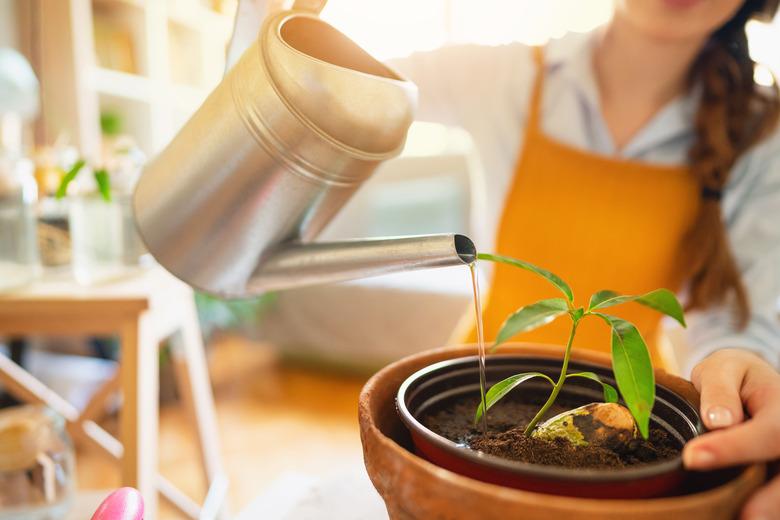Which Mango Trees Can Be Grown In Canada?
Mango trees (Mangifera indica) are famous for producing delicious tropical fruit. While these trees grow in tropical/subtropical climates in U.S. Department of Agriculture plant hardiness zones 10b through 11, it's possible to grow them in cold-climate locations such as Canada when using containers and being mindful of when to bring the plants indoors. Understanding the best varieties and growing techniques is key to producing this sweet fruit in cold climates.
Tip
The best varieties of mango trees to grow in Canada are those that are suitable for containers that can be moved indoors or outdoors depending on the temperature.
Start With the Best Varieties for Containers
The first essential element to growing a mango in a cold climate is whether the variety grows well in a container. It is also important to note whether it can be moved indoors and outdoors as temperatures change. Choose the right type of plant for growing these tropical plants in cold climates. The following varieties are great for growing in containers and are easy to move outdoors when temperatures are warm enough.
- 'Cushman' mango: This variety produces satiny, fiberless mangoes that resemble grapefruits in appearance. The tree is susceptible to diseases, but this doesn't affect the taste and texture of the fruits, which typically ripen in July and August.
- 'Cogshall' mango: Growing to only 8 feet tall with proper maintenance, this compact mango cultivar produces a hearty yield of sweet fruit that ripens in June and July.
- 'Carrie' mango: A Florida cultivar, the Carrie mango tree produces rich, sweet 6-inch fruit ripening in June and July. The tree is resistant to both diseases and fungi and is ideal for container culture.
How to Grow a Mango From Seed
1. Getting Started
This is the tasty part: Enjoy a delicious mango from the market! Make sure it's the variety you're looking to grow. After you eat the fruit, scrape all the flesh off the pit and let it dry on a clean surface for about 24 hours.
2. Remove the Seed
After the pit has dried, carefully pry it open to remove the outer shell, revealing the seed inside. This is the part that will grow into your new plant.
3. Prepare the Seed
Remove the thin layer of skin on the seed. You can do this with the back of a spoon or a knife, scraping carefully so you don't damage the seed. This step is essential to prevent mold growth.
4. Germinate the Seed
Examine the seed to find the round nub or fold on the narrow end. This is where your seed will sprout. Stick toothpicks into the seed so you can suspend the seed over a container of water with the sprout end just touching the water.
5. Maintain the Seed
Place the container in a well-lit area and keep the water fresh, making sure the sprout end is in the water. You'll see a small sprout grow in five to seven days that becomes a tiny plant in two to four weeks.
6. Plant in a Container
Once there are 5 to 6 inches of growth, remove the seedling and plant it in any high-quality potting soil in a pot with bottom drainage holes. Place the pot in a warm location with ample sunlight. Remember to keep the soil damp by gently watering when the top of the soil begins to look dry.
7. Move to a Bigger Container
As your plant outgrows the pot, you can replant it in a slightly larger container to foster growth.
Tip
- Warmth and sunlight are key elements to growing mangoes.
- It takes five to six years for a mango tree to bear fruit.
- Fruit tree care, including pruning and fertilizing, is important for healthy growth.
- Mango trees are self-fertile, so you can grow fruit with only one tree.
- Waiting for fruit to ripen can be difficult, but it's worth it!
References
- Top Tropicals: Mango
- Niagra Parks: Get Growing with Niagara Parks: Mangoes
- Owlcation: Facts About the Mango Tree: Description, Types, and Uses
- Pine Island Nursery: Cogshall Mango
- Garden Clinic: Mango
- Pine Island Nursery: Carrie Mango
- Pine Island Nursery: Cushman Mango
- Texas A&M AgriLife Extension: Fruit & Nut Resources: Mango
- University of Florida IFAS Extension: Mangifera indica: Mango
